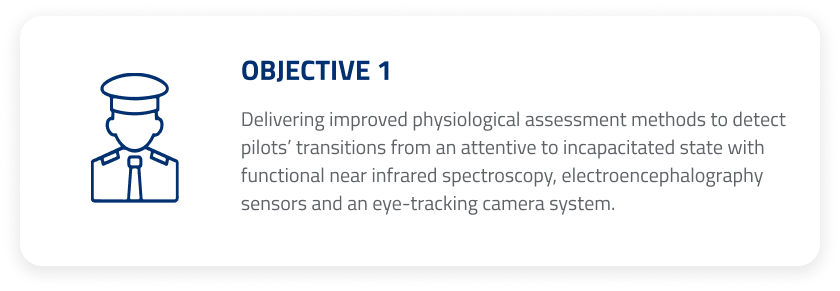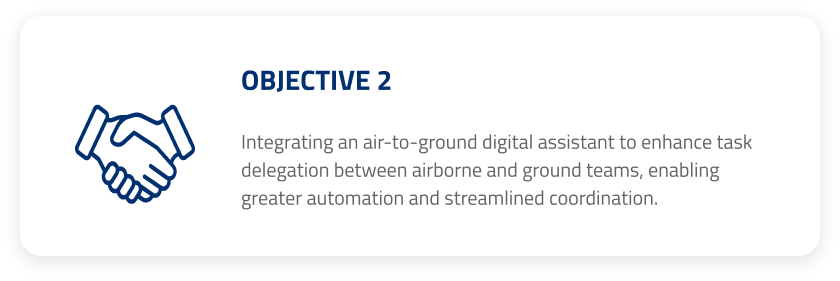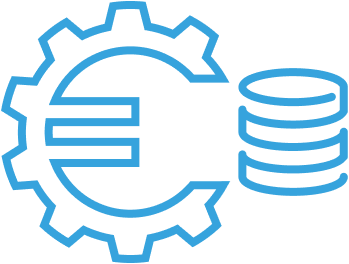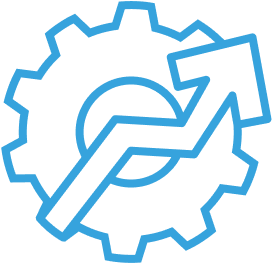About
About
The Impact of SiPO on Aviation
The resilient growth of global air travel continues to lead to ever busier skies and airports, placing increasing workload on pilots and operators both in the air and on the ground, as well as increasing the demand for pilots globally. Addressing these concerns will require technological solutions, in the form of increasingly automated assistance systems to help alleviate pilot workload (reduced crew operation, extended minimum crew operations), as well as fully autonomous solutions which can support Single Pilot Operations (SiPO) in the event of pilot incapacitation. On the other hand, the adoption of new operational procedures such as SiPO will have an impact on the ground operations and the Air Traffic Control (ATC) operators’ responsibilities.
The Aim
The RESPONSE consortium aims to deliver one TRL2 (Technology Readiness Level) solution: safe return to land including pilot incapacitation. The proposed solution directly supports pilots’ incapacitation transition monitoring and delivers an integrated air-to-ground SiPO CONOPS to enhance safe return to land operations. RESPONSE delivers a technology enabler as pilot incapacitation transition monitoring with improved physiological assessment methods to detect pilots’ transitions from an attentive to incapacitated state.
The Solution
The solution delivered is a safe return to land CONOPS introducing the role of air-to-ground digital assistants minimizing the required changes from dual pilot operations to SiPO, including dealing with pilot incapacitation in the flight deck, with the impact on ATC operators’ tasks and with the role of human autonomy/ AI teaming to support workload reduction.
The Baseline
RESPONSE project builds on top of the outcomes and recommendations of SAFELAND project and will enhance the execution of current projects in SESAR3 Industrial Research, actively contributing to the future preparation and delivery of a full demonstrator for safe return to land in the case of SiPO.
Objectives


Objectives


Methodology

STATE OF THE ART
For both solution
and technology
enabler a proper
state-of-the-art is
executed leveraging
among others the
work done in
SAFELAND.

REQUIREMENTS
Based on the OSED
built for
RESPONSE,
requirements are
derived for the
Solution, building
the first versions of
functional
requirements.

PROOF OF CONCEPT
From the
requirements a
research plan is
finalized (ERP) and
a prototype is built
and utilized for
validation activities.

ASSESSMENT
FRD and OSED
documents will be
completed, and
reports of the
research conducted
will be produced
along with an
economic
evaluation
assessment.
Methodology

STATE OF THE ART
For both solution
and technology
enabler a proper
state-of-the-art is
executed leveraging
among others the
work done in
SAFELAND.

REQUIREMENTS
Based on the OSED
built for
RESPONSE,
requirements are
derived for the
Solution, building
the first versions of
functional
requirements.

PROOF OF CONCEPT
From the
requirements a
research plan is
finalized (ERP) and
a prototype is built
and utilized for
validation activities.

ASSESSMENT
FRD and OSED
documents will be
completed, and
reports of the
research conducted
will be produced
along with an
economic
evaluation
assessment.
Expected Outcomes

CAPACITY

COST-EFFICIENCY

OPERATIONAL
EFFICIENCY

ENVIRONMENT
Expected Outcomes

CAPACITY

COST-EFFICIENCY

OPERATIONAL
EFFICIENCY

ENVIRONMENT
